Last season, there seemed to be a higher number of ankle sprains suffered by VDL players. I saw players spraining their ankles when jumping and landing on a dodgeball, getting their foot stuck underneath the dividing wall during playoffs, or even simply when trying to make a quick turn during opening rush.
That is “Classic”!
The “classic” ankle sprain is usually that of an inversion-type; approximately 85% of ankle sprains are of this type (Rifat and McKeag, 1996). An inversion ankle sprain is when the foot rolls outward, damaging the ligaments on the outside (or lateral side) of the ankle. An eversion ankle sprain happens in the opposite direction, injuring the ligaments on the inside (or medial) of the ankle. You may have also heard of a high ankle sprain, which is an injury to the ligaments above the ankle.
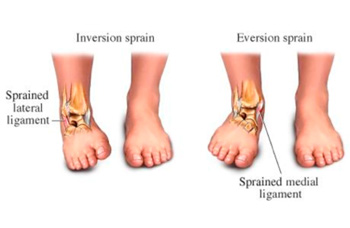 |
Figure A. Inversion and Eversion Sprains. Adapted from http://drcrystaldraper.com/ankle-sprain-why-do-i-keep-re-injuring-my-ankle |
Similar to my previous post on finger sprains, the severity of ankle sprains are classified the same way (Sprained Ankle, 2012):
| Grade I | Minimal swelling and pain Able to walk but with maybe a slight limp |
| Grade II | Moderate swelling and pain Difficulty with walking |
| Grade III | Significant swelling and severe pain Unable to weightbear, requires crutches |
What should I do if I’ve sprained my ankle?
If you feel your ankle sprain is not too severe, such as a Grade I-II sprain, you can try the R.I.C.E. Protocol:
-
Rest your ankle as much as possible by staying off of your foot, skipping a week of dodgeball, and avoiding activities that aggravate your ankle injury.
-
Ice your ankle often for the first 2-3 days; try 6-8 times a day for 15-20 minutes each time (Harmon, n.d.).
-
Compress your ankle by wrapping a tensor bandage to help keep the swelling from getting more severe (refer to Figure B).
- Elevate your ankle wherever possible: when sitting at work/school/home, put your foot up on another chair or coffee table. When sleeping, place your injured ankle on a pillow so that it is higher than the level of your heart.
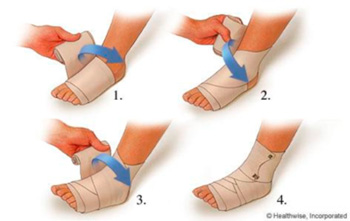 |
Figure B. Ankle Compression with a Tensor Bandage. Adapted from http://www.uofmhealth.org/health-library/zm2802 |
For more severe ankle sprains like a Grade III sprain, the R.I.C.E. protocol can be applied as well, but it is definitely recommended that you visit your family doctor or physiotherapist as soon as possible.
Typically your ankle pain should lessen and your function should be better after approximately a week. If that is not the case at all, it is best to visit a healthcare professional.
Bad News…
Once you sprain your ankle, your chances of re-injuring that same ankle and ligament are high. If you like numbers, here are some stats:
-
Of a total 522 Dutch athletes, 145 (28%) reported an ankle sprain recurrence during a 1-year period (Hupperets et al., 2010)
-
73% of 380 athletes from Hong Kong at varying levels of competition (ie. 64 national-level, 177 competitive-level, 125 recreational-level, 14 other) had recurrent ankle sprains (Yeung et al., 1994)
-
In Belgium, 44.5% of 162 physical education students re-injured their ankle within a 4 year period (Lysens et al., 1984)
What can I do to prevent further ankle sprains?
The best way to prevent further ankle sprains is a combination of exercises to improve strength/balance/proprioception in your ankle as well as bracing or taping the ankle during physical activities. The taping technique for an ankle sprain is complicated and requires training to learn it. If you suffer from repeated or chronic ankle sprains, it is probably in your best interest to invest in a good ankle brace. Since I have gotten some questions from a few VDL players regarding ankle braces, I present to you all a ranking of different ankle braces.
From least supportive to most supportive:
Neoprene Sleeve Ankle Brace
|
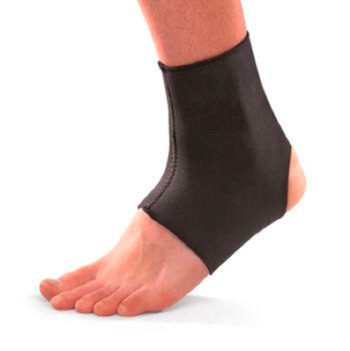 |
Neoprene Ankle Brace with Velcro Straps
|
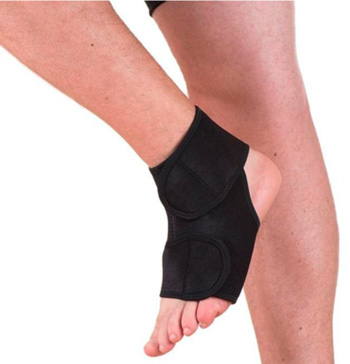 |
Stirrup Ankle Brace
|
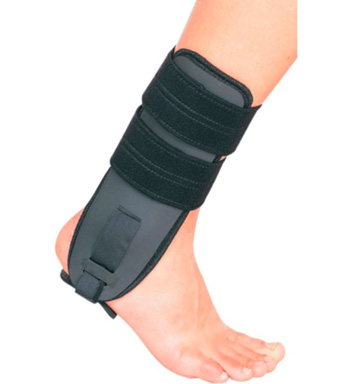 |
Lace-up Ankle Brace with Rigid Side Stabilizers
|
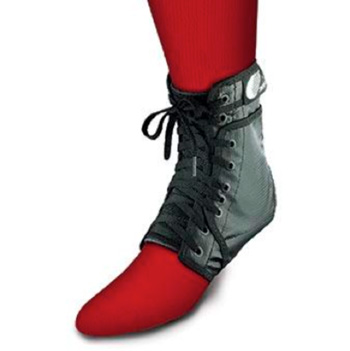 |
Lace-up Ankle Brace with Figure-8 Velcro Straps and Rigid Side Stabilizers
|
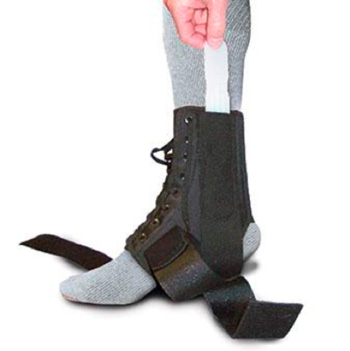 |
Where can I get these braces?
In my opinion, you should NOT be purchasing an ankle brace from a Loonie/Toonie/Dollar Store (you know who you are…).
A quick internet search revealed that the neoprene sleeve-types and the stirrup-type ankle braces can be found at supermarkets and pharmacies. For the ankle braces with more support, you will need to visit a sports specialty store or a physiotherapy clinic.
Carolyn Tam is a registered physiotherapist currently working in the Lower Mainland. She completed her Master of Physical Therapy degree at the University of British Columbia after graduating from UBC with a Bachelor of Human Kinetics.
References
Harmon, A. (n.d.). Ice versus heat: Treating your injury properly. Retrieved on Sept 28, 2013, from http://www.thesportsfamilyclub.com/ice-vs-heat-whats-best.
Hupperets, M.D.W., Verhagen E., Heymans W.M., Bosmans, J.E., van Tulder, M.W., and van Mechelen, W. (2010). Potential Savings of a Program to Prevent Ankle Sprain Recurrence: Economic Evaluation of a Randomized Controlled Trial. Am J Sports Med. 38(11). doi: 10.1177/0363546510373470.
Lysens, R., Lefevre, J., Renson, L., and Ostyn, M. (1984). The Predictability of Sports Injuries A Preliminary Report. Int. J. Sports Med. 5:153—155.
Rifat, S.F. and McKeag, D.B. (1996). Practical Methods of Preventing Ankle Injuries. American family physician. 53(8): 2491.
Sprained Ankle. (2012). Retrieved Sept 28, 2013, from http://orthoinfo.aaos.org/topic.cfm?topic=a00150.
Yeung, MS, Chan, KM, and So, CH. (1994). An epidemiological survey on ankle sprain. Br J Sports Med. 28: 112-116. doi: 10.1136/bjsm.28.2.112.
